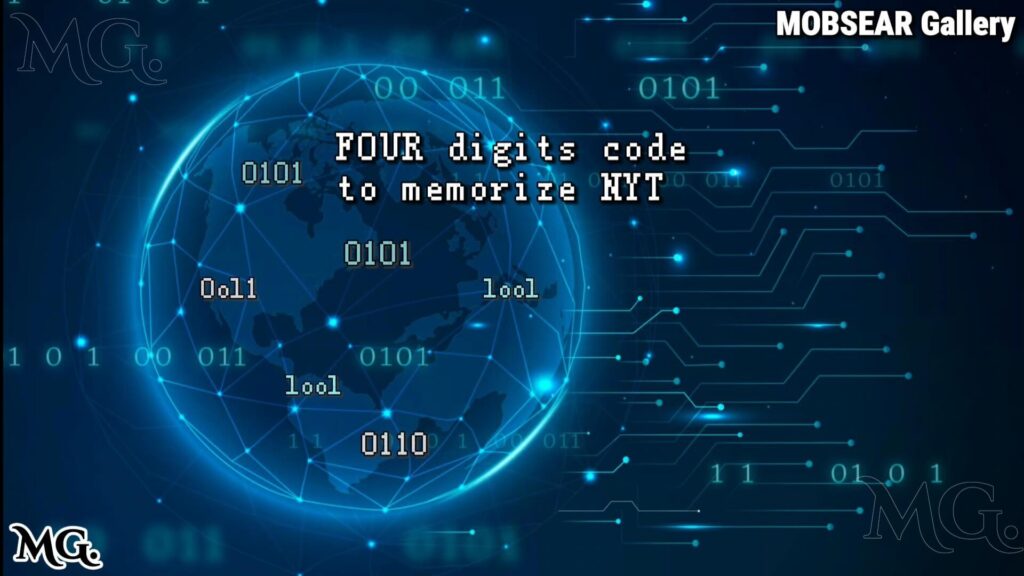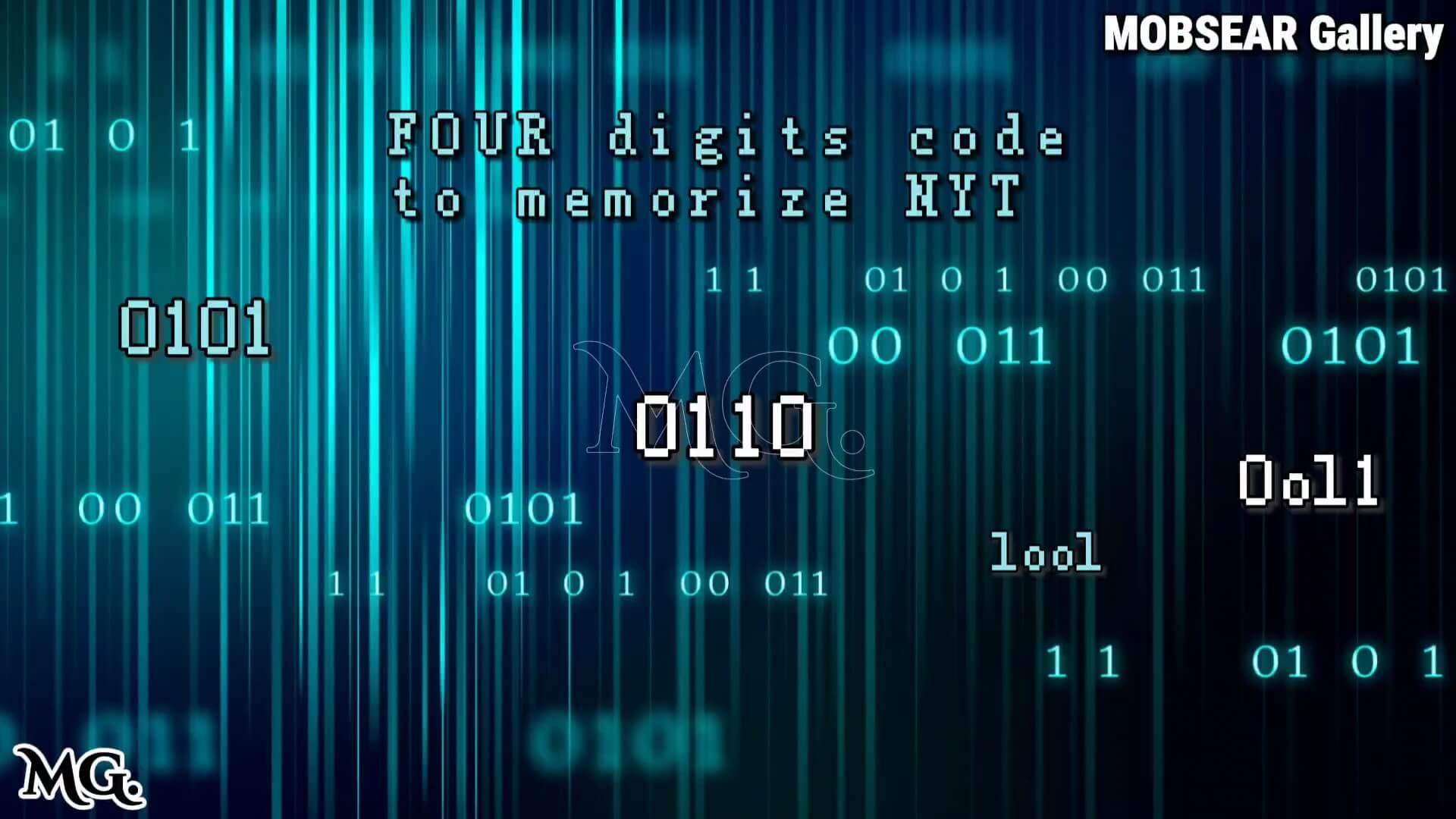Have you stumbled upon the phrase “four digits to memorize NYT” while browsing the web or in conversation? Perhaps you saw it mentioned on a social media post or heard it in passing. It can be a puzzling little phrase, leaving you wondering what exactly it refers to and why it’s important enough to memorize. Well, fret no more! This article dives deep into the enigmatic “four digits to memorize NYT,” exploring its potential meanings and offering some helpful insights.
But wait, before diving into the plot some questions for you. Are you tired of constantly forgetting important information? Do you wish you could retain numbers effortlessly? Well, you’re in luck! In this article, we’re diving into the fascinating world of memory and revealing a powerful technique: memorizing four digits to memorize NYT (New York Times). Yes, you read that right – the renowned newspaper holds the key to boosting your memory prowess. Let’s explore how this simple yet effective method can transform the way you remember numbers.
Understanding the Power of Memory
Memory is a remarkable aspect of the human brain. It enables us to recall past experiences, learn new skills, and navigate through our daily lives. However, many of us struggle with retaining certain types of information, especially numbers. Whether it’s phone numbers, addresses, or PIN codes, four digits to memorizing nyt can be a daunting task.
Now, the New York Times crossword puzzle – a daily ritual for wordplay enthusiasts worldwide. But sometimes, even the most seasoned solvers get stumped. Enter the elusive “four-digit” clue, a cryptic challenge that often leaves us scratching our heads.
Fear not, fellow wordsmiths! This comprehensive guide delves into the world of four digits to memorize NYT crossword answers, equipping you with the knowledge and strategies to crack these enigmatic entries.
Why Four Digits? A Historian’s Perspective
The history of the NYT crossword dates back to 1913, featuring clues and answers that reflected the cultural landscape of the time. Four-digit entries likely emerged as a way to incorporate a wider range of information – years, historical events, scientific discoveries, and even pop culture references (think band founding years or movie release dates).
Over the decades, four-digit clues have become a staple of the NYT crossword’s “challenging” section. They add a layer of complexity, testing a solver’s knowledge base and ability to think outside the box.
The Challenge of Memorizing Numbers
Why is it so difficult to remember numbers? One reason is that numbers lack inherent meaning or context, making them abstract and easily forgettable. Our brains are wired to prioritize information that is meaningful and relevant to us, such as names, faces, or stories. As a result, digits often slip through the cracks of our memory, leaving us frustrated and forgetful.
Decoding the Mystery: Common Themes in Four-Digit Clues
Now, let’s get down to brass tacks. What kind of information do four-digit clues typically represent? Here are some recurring themes:
- Historical Dates: This is a classic – founding years of empires, battles, treaties, or scientific breakthroughs. Think 1776 (U.S. Declaration of Independence) or 1453 (Fall of Constantinople).
- Scientific Discoveries: Brush up on your science knowledge! Four-digit clues might reference the year an element was discovered (1803 for Palladium) or a groundbreaking invention (1876 for the telephone).
- Literary Works: The NYT crossword loves its literature. Be prepared for publication dates of famous novels, plays, or poems. Think 1813 for “Pride and Prejudice” or 1599 for “Hamlet.”
- Art and Music: Art history buffs and music aficionados rejoice! You might encounter clues referencing the year a masterpiece was painted (1889 for Starry Night) or a symphony premiered (1824 for Beethoven’s Ninth).
- Pop Culture References: Yes, even the NYT crossword acknowledges pop culture! Be on the lookout for clues related to band formations (1964 for the Beatles) or movie releases (2001: A Space Odyssey in, well, 2001).
Now, Introducing the New York Times Method to Memorize NYT
Enter the New York Times (NYT) method – a simple yet powerful technique for memorizing four digits. This method relies on associating each digit with a word based on its position in the number sequence. By leveraging the imagery and creativity of language, we can transform abstract numbers into vivid mental images that are easier to remember.
How It Works:
Let’s break down the New York Times method for four digits to memorize nyt step by step:
- Selecting a Number Sequence: Start by choosing any four-digit number from the New York Times. This could be a date, a page number, or any other numerical sequence that catches your eye.
- Assigning Words to Digits: Next, associate each digit in the sequence with a word based on its position. For example, if your number is “1825,” you could assign the word “banana” to 1, “giraffe” to 8, “tree” to 2, and “river” to 5.
- Creating Mental Images: Visualize each word in a vivid and imaginative way. Picture a giant banana swinging from a tree, with a giraffe grazing nearby and a flowing river in the background.
- Linking the Images: Finally, link the mental images together in a memorable sequence. Imagine the giraffe reaching for the banana, then climbing the tree and diving into the river with a splash.
Why It Works:
The New York Times method leverages the power of associative memory – our brain’s natural ability to link related concepts together. By encoding numbers as words and images, we tap into our brain’s visual and linguistic processing centers, making the information more memorable and easier to recall.
Explore more information on MOBSEAR Gallery.
Beyond the Basics: Advanced Strategies for Four-Digit Clues
Now that you know the common themes, here are some advanced strategies to conquer those four digits beasts to memorize nyt:
- Cross-Referencing: Utilize the intersecting clues. Often, the answer to a four-digit clue might be thematically connected to another answer in the crossword.
- Letter Patterns: Look for patterns within the clue itself. Is there a specific word or abbreviation that might hint at the answer’s format (e.g., “B.C.” for dates before Christ)?
- Think Outside the Box: Sometimes, the answer might be a clever wordplay on the four digits. Don’t be afraid to get creative and consider unconventional interpretations.
Case Studies: Deciphering the Mystery
Let’s put theory into practice by dissecting some real-life examples of the “four digits clue to memorize nyt”:
- Scenario 1: The clue intersects with a down clue mentioning “Apollo mission.” Looking at the answer grid, you see “_ _ 1 _.”
Solution: Drawing on your knowledge of history, you recall there were six Apollo missions to the moon. Since the answer grid has a “1” in the third position, the missing digits could be “110,” signifying the Apollo 11 mission that landed the first humans on the moon.
- Scenario 2: The clue sits next to a clue mentioning “chemical element.” The answer grid reveals “2 _ _ _.”
Solution: Here, a bit of scientific knowledge comes in handy. You remember that the atomic number of an element corresponds to the number of protons in its nucleus. Looking at the periodic table (or using a crossword puzzle app with a built-in dictionary), you discover that element number 2 is Helium, with an atomic number of 2. So, the answer becomes “2000.”
- Scenario 3: The clue appears in a crossword with a movie theme. The answer grid shows ” _ 8 _ _.”
Solution: Thinking creatively, you consider famous movie quotes. Perhaps the answer could be “187,” a reference to the police code for homicide in some films.
Benefits of the New York Times Method
So, why should you bother memorizing four digits from the New York Times (NYT)? Here are some compelling reasons:
- Improved Memory Skills: Practicing the New York Times method strengthens your memory muscles, making it easier to remember numbers in everyday life.
- Enhanced Creativity: This technique encourages creative thinking and imagination, as you conjure up vivid mental images to represent each digit.
- Greater Cognitive Engagement: Engaging multiple cognitive processes – such as visual, linguistic, and associative – enhances overall brain function and mental agility.
- Practical Applications: The ability to remember numbers can be incredibly useful in various situations, from remembering phone numbers to recalling important dates and facts.

Building Your Memory Arsenal: Resources and Techniques
Let’s face it, memorizing a long list of four-digit facts isn’t exactly the most thrilling activity. Here are some resources and techniques to help you build your memory arsenal in a fun and engaging way:
- Flashcard Apps: Utilize apps like Anki or Quizlet to create digital flashcards with four-digit clues and answers. Gamified features and spaced repetition algorithms can significantly improve memorization.
- Themed Lists: Compile curated lists of four-digit facts based on your interests – historical events, scientific discoveries, or your favorite literary works.
- Crossword Puzzle Podcasts and Websites: Several online resources and podcasts focus specifically on the NYT crossword. These platforms often delve into common four-digit themes and provide helpful tips and discussions.
Tips for Success: Four Digits to Memorize NYT
To make the most of the New York Times method, keep these tips in mind:
- Choose numbers that are personally meaningful or relevant to you.
- Use colorful and distinctive words to represent each digit.
- Practice regularly to strengthen your memory skills and refine your mental imagery.
- Experiment with different mnemonic techniques to find what works best for you.
Bonus Tip: Building a Mental Toolbox
Here are some ways to improve your overall crossword-solving skills:
- Expand Your Vocabulary: The more words you know, the easier it will be to fill in the blanks. Read widely, play word games, and challenge yourself to learn new words every day.
- Brush Up on Your History and Pop Culture: Crossword clues often reference historical events, famous figures, and cultural touchstones. Having a broad base of knowledge will give you a leg up.
Conclusion: Four digits to memorize NYT
In conclusion, the New York Times method offers a fun and effective way to boost your memory skills and unlock the potential of your brain. By transforming abstract numbers into vivid mental images, you can make remembering digits a breeze. So why not give it a try? Pick up today’s copy of the New York Times, select a four-digit number, and embark on a journey of memory mastery. Who knows what you’ll discover along the way?
The Final Word: Embrace the Challenge!
Don’t let four digits to memorize nyt clues intimidate you. Consider them an opportunity to expand your knowledge base and sharpen your problem-solving skills. Remember, the beauty of the NYT crossword lies in the journey of discovery. Celebrate the “aha!” moments when you finally crack a cryptic clue, and use it as a springboard to learn more about the fascinating world the answer represents.
So, the next time you encounter a four digits clue to memorize in the NYT crossword, take a deep breath, channel your inner sleuth. And remember – with a little strategy and a dash of curiosity, you can conquer even the most challenging entries. Happy solving!

